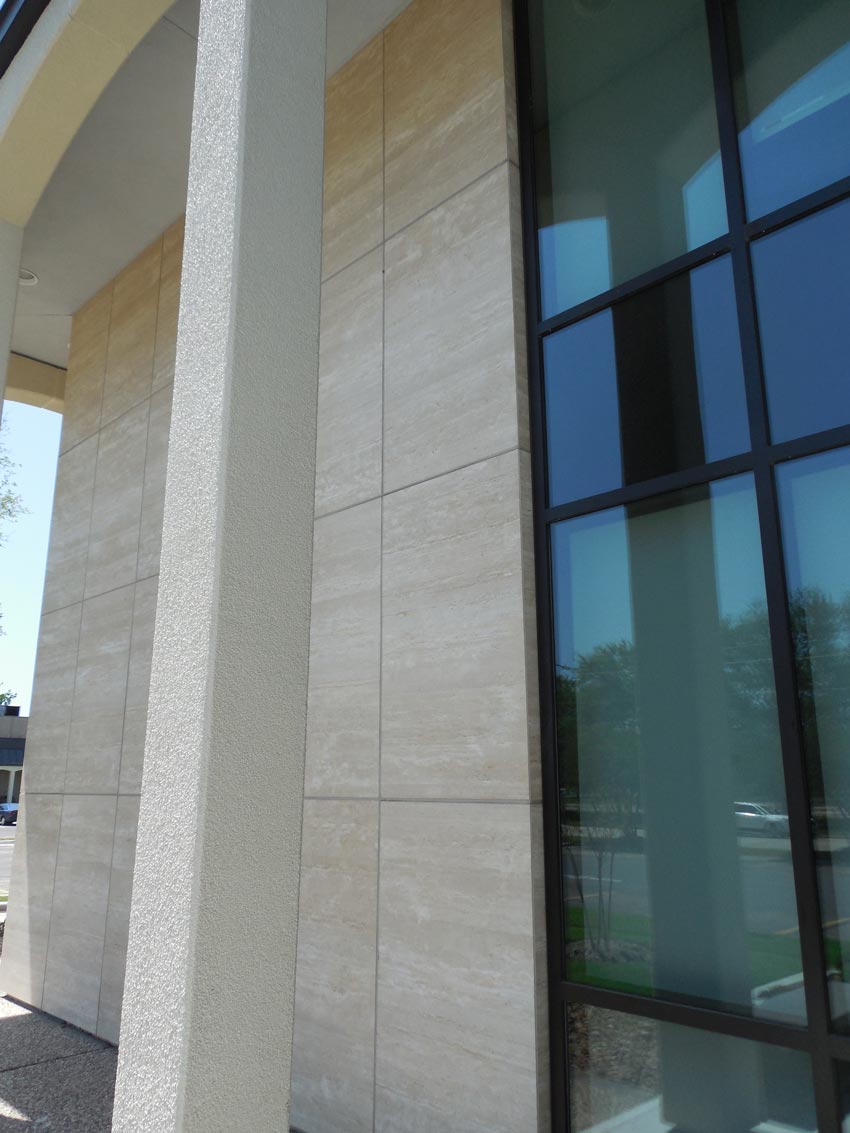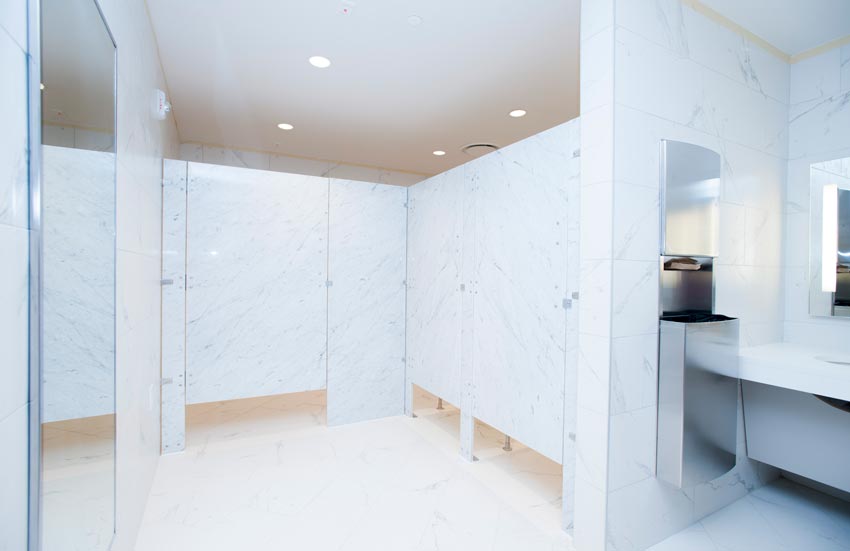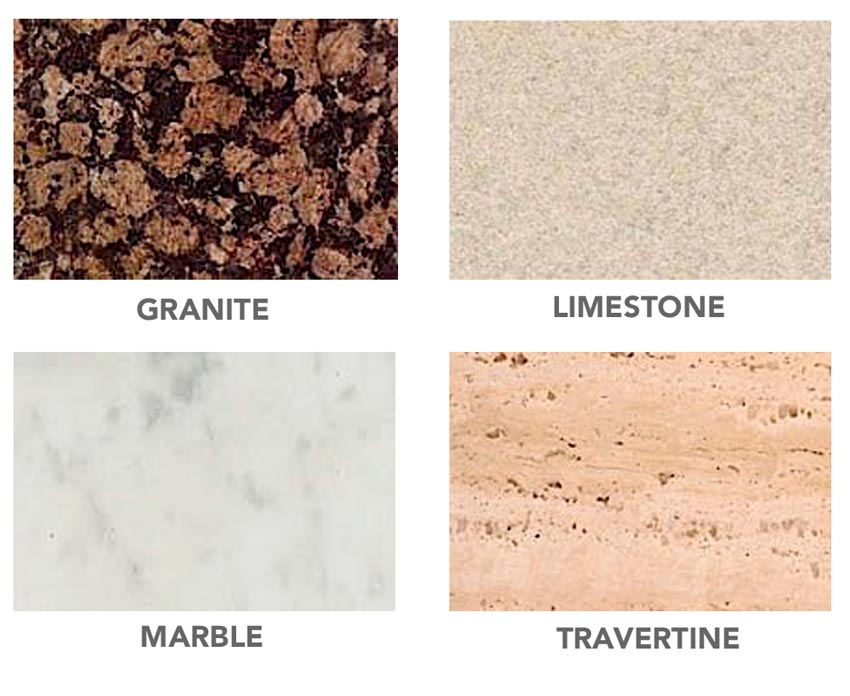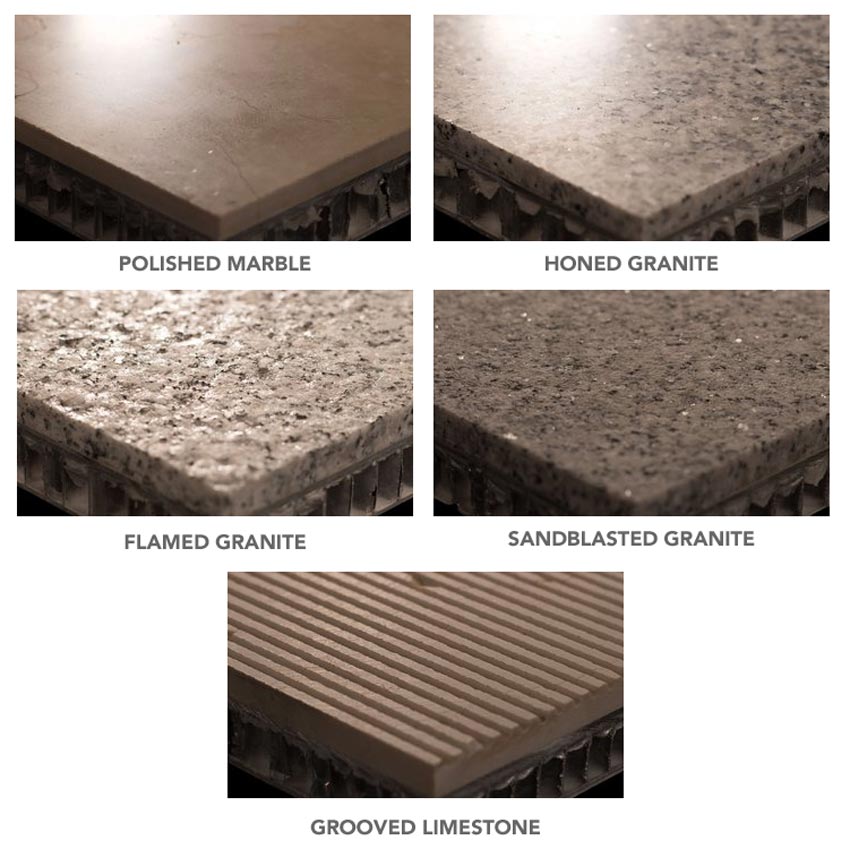Enhancing the Stone
There are many beautiful options for both exterior and interior panels. All of these applications give the look of full thickness stone without the added weight, allowing customers to have the beauty of natural stone for their projects. Here are some additional examples:

League City wall panels (travertine)

Queens Hospital wall panels

Envoy Hotel interior wall panels

Texan Theater toilet partitions
Design Options
Panels are available in almost any stone and a variety of finishes to suit practically any design need. Most building stone is available on aluminum honeycomb panel backing, which are typically 1/2 inch or 3/4 inch thick. (Note: Stone selection may vary by manufacturer.) Let’s take a look at some of the options.
Natural Stone Types. Stone types include granites, marbles, limestone, and travertine.

Sample of different stone types
- Granite. The hardest and most durable of stones. Granite is formed far beneath the earth’s surface as molten rock slowly cools and crystalizes.
- Marble. Used in fine architecture since ancient times, marble was originally formed from limestone that had been compacted and transformed by heat and pressure.
- Limestone. A calcium-based stone that is widely used in architecture. Formed in ancient seas from the calcium precipitate and from the shells and structures of tiny sea creatures that have been compressed and cemented over centuries.
- Travertine. The stone of the Roman Colosseum. Recognizable for its pitted surface, travertine is a calcium-rich stone formed in natural springs.
Stone finishes and colors. Stone finishes include polished, honed, flamed, sandblasted, and tooled, each providing its own unique aesthetic. How a stone appears depends upon color, pattern, and reflectivity.
- Polished. Diamond-faced pads wet polish the stone to a brilliant shine and a reflective finish. Polishing is available in marble and granite, but is not available in most limestones or sandstones.
- Honed. The stone receives a smooth mat sanded finish. The surface is smooth but not reflective.
- Flamed. The surface of the stone is super heated with a torch and then rapidly quenched to pop the crystals. This produces a rough textured finish.
- Sandblasted. The surface is blasted with an abrasive sand to create a finish slightly rougher than honed.
- Tooled. Tooled finishes include bush hammered, carved and engraved. Names, emblems, logos, signs, and other custom designs can be sandblasted or etched into panels to create unique accents and elements.
Stone runs the gamut from light to dark and all colors in between. Color is made up of reflected light, and the texture of the stone’s surface affects that. Polished stone tends to be darker, while sandblasted or flamed stone appears lighter. A black granite may appear deep black when polished, light gray when honed, and an even paler shade of gray when flamed.
Keep in mind that dark black stone can get very hot to the touch in full sun. In areas where people can touch the stone, a black or dark brown stone may not be the best choice. Instead, you may want to choose a white or lighter color stone.
Bottom line, when selecting cladding stone, make sure you see both the stone and the finish before you decide.

Examples of different stone finishes









